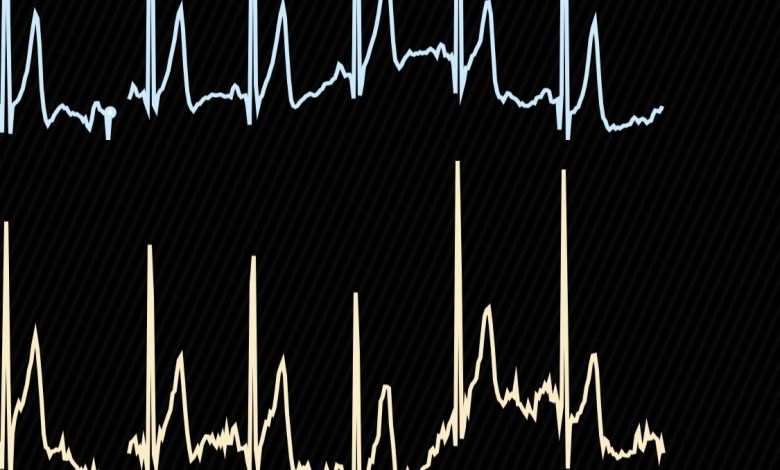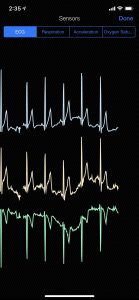
We all assume that our heart beats are normal until one day, it gives you problems – could be minor, or life threatening. It affects all ages from youth to seniors, and from healthy athletes to people with cardiovascular related conditions. People tend to ignore symptoms (or may not be aware of what they are) until their condition has deteriorated to an acute or chronic condition.
The challenge in current healthcare diagnostic protocols? Initially it is your GP or Cardiologist who has to track down the elusive abnormal heart rhythm beats – any or all of the following including “too slow (bradycardia) or too fast (tachycardia) or missed or paused beats (cardiac pause) using the standard of care diagnostic protocol called an Electrocardiogram (ECG). Therefore, for 24 to 72 hours you wear the ECG wired harness device – 3 to 12 leads connecting to an external recorder strapped to your chest. This standard of care protocol is to monitor and detect abnormal heartbeat rhythms that may help doctors (clinicians) to identify and prevent events through early diagnosis. These hours of recordings however still need to be analyzed by human technicians for review by cardiologists, and are dependent to great degree on the timing of symptomatic events recorded by the wearer (by a 1 minute lapse prior or after the wearer’s recorded event).

The catch? In the current diagnostic protocol for ECGs, not all symptomatic events may be detected by the wearer and therefore not included in the analysis by human technicians. As well, the wearer may have an an abnormal heartbeat or rhythm event occur outside of the standard 24 to a 72-hour time window worn by the patient, and as preset by the clinician.
So, what if you could simply wear an AI enabled t-shirt (Wearable Technology where the wires are embedded into the fabric) as a diagnostic solution that can be remotely monitored and recorded via a Digital APP to your cell phone or tablet? Yes, artificial Intelligence (AI) has made that possible. AI enabled Wearable Technology currently exists for public purchase – however motion interference or “noise” from the wearer’s movements may distort the accuracy of the digital recording.
In Episode 1, Dr. Pierre Boulanger shares insights on the development of an AI algorithm mobile App with his University of Alberta graduate student Hong Zu Li. By combining heart beats and heart rhythms, the App removes the movement “noise” from the wearer of the Astroskin biometric garment (tank top shirt), and enables real time wireless tracking of heart and vital sign parameters to a mobile App. This App detects abnormal heart rhythms that are not normal for the specific patient (personalized data) and provides clinicians with another way (other than the current standard ECG wired harness) to detect and diagnose potential diseases or conditions as a diagnostic tool.
Additional details on the App technology and potential uses in other industry and lifestyle applications to follow in future Episodes.
About Dr. Pierre Boulanger PhD
Pierre is currently the Director of the Advanced Man Machine Interface Laboratory (AMMI) as well as the Scientific Director of the SERVIER Virtual Cardiac Centre in the Mazankowski Heart Institute. In 2013, Dr. Boulanger was awarded the CISCO chair in healthcare solutions, a 10 years investment by CISCO systems in the development of new IT technologies for healthcare in Canada.
Dr. Boulanger received his in Engineering Physics and his Masters in Physics Laval University, and his Ph.D. in Electrical Engineering from the University of Montreal. Dr. Boulanger cumulates more than 35 years of experience in 3D computer vision, rapid product development, and the applications of virtual reality systems to medicine and industrial manufacturing. Dr. Boulanger worked for 18 years at the National Research Council of Canada as a senior research officer where his primary research interest was in 3D computer vision, rapid product development, and virtualized reality systems. He now has a double appointment as a professor at the University of Alberta Department of Computing Science and at the Department of Radiology and Diagnostic Imaging.
About Hong Zu Li
Hong Zu is currently a second year Ph.D. student of Dr. Pierre Boulanger in the Computing Science Department, University of Alberta. Hong Zu received both his Computing Science Bachelor’s degree and his master’s degree from the University of Alberta. He is currently working on a continuous heart monitoring system that reports heart anomalies.
About Astroskin
Astroskin is a Wearable Technology, similar to the Biomonitor vest (biometric clothing) that Hexoskin developed with the Canadian Aerospace Agency. Astronaut David St. Jacques wore the vest during his International Space Station mission in 2019.




